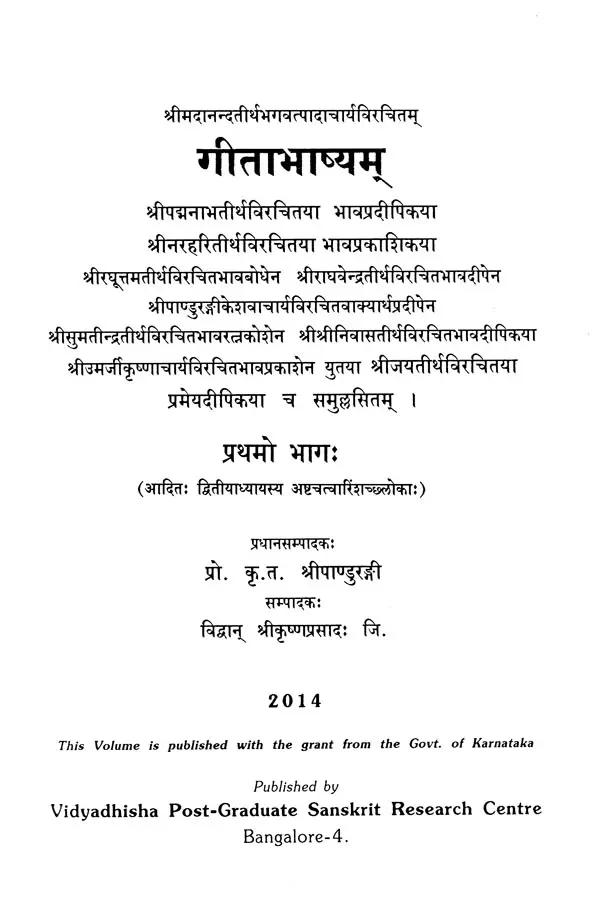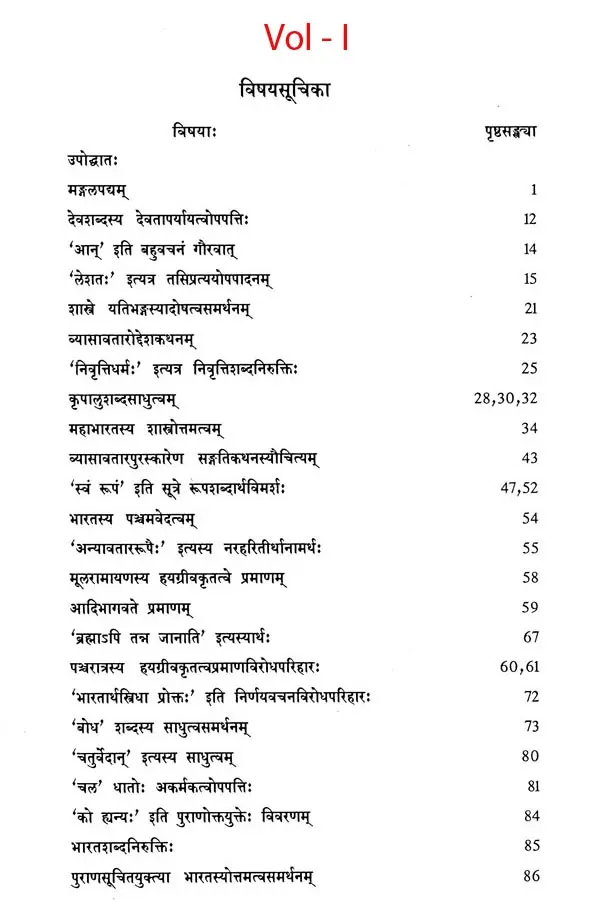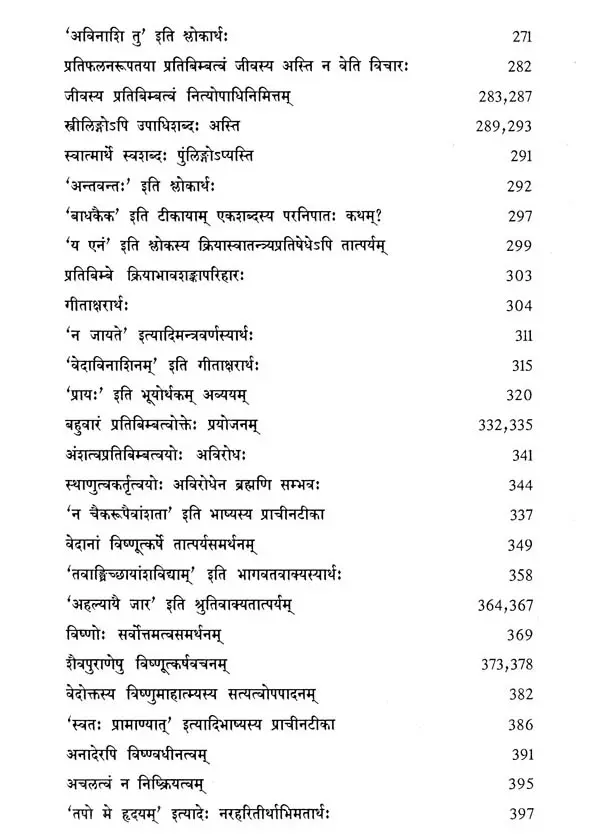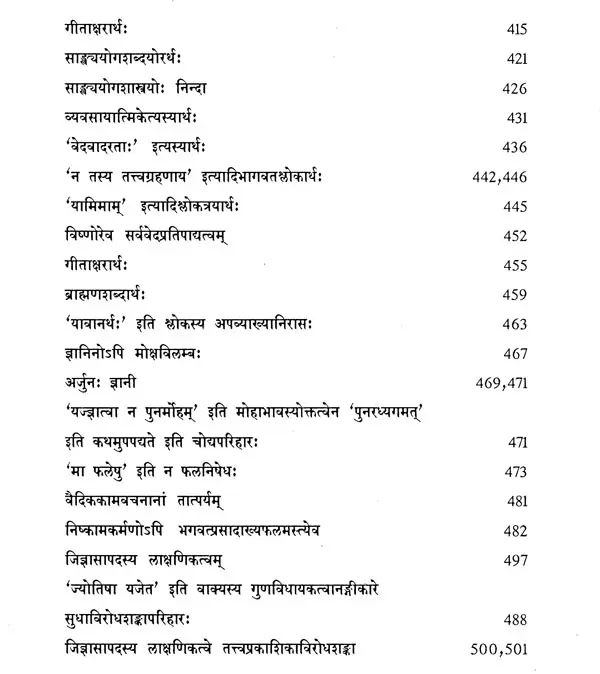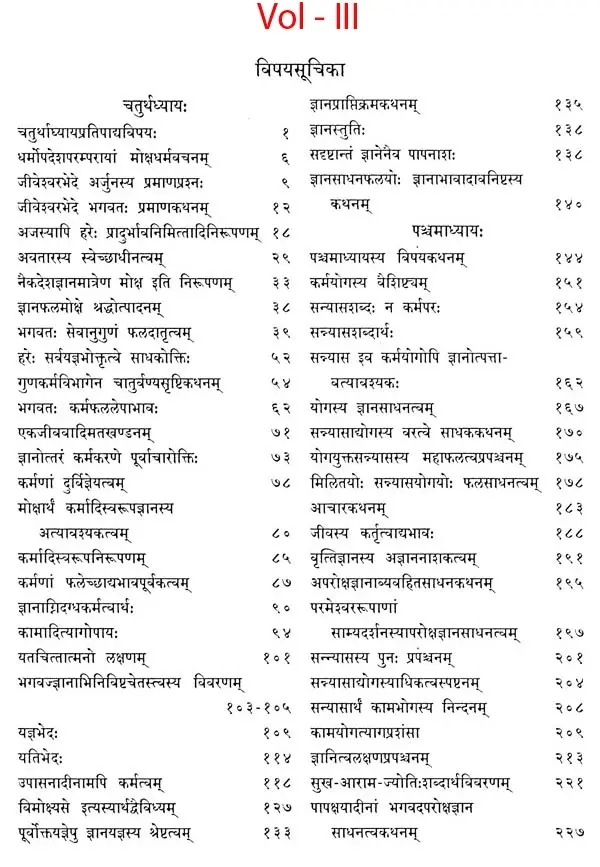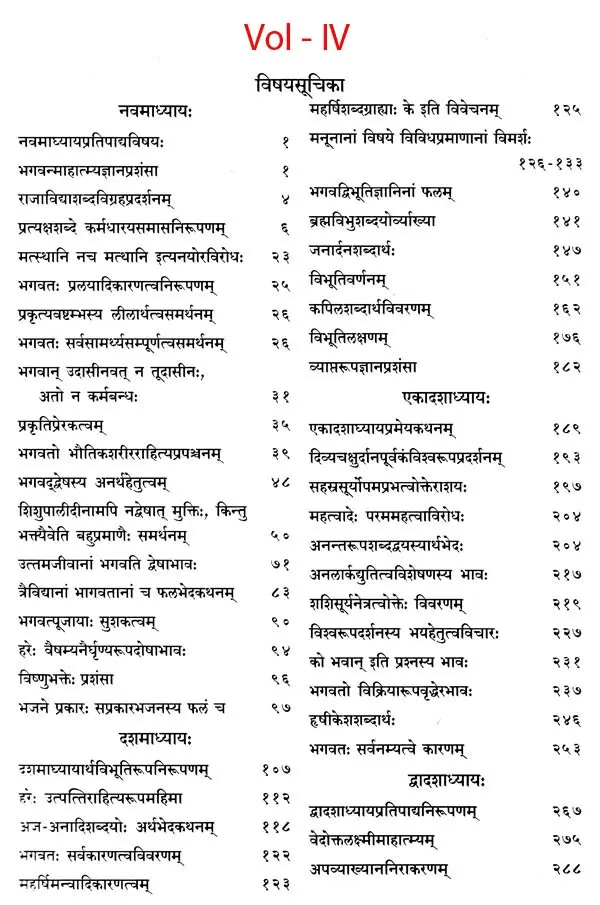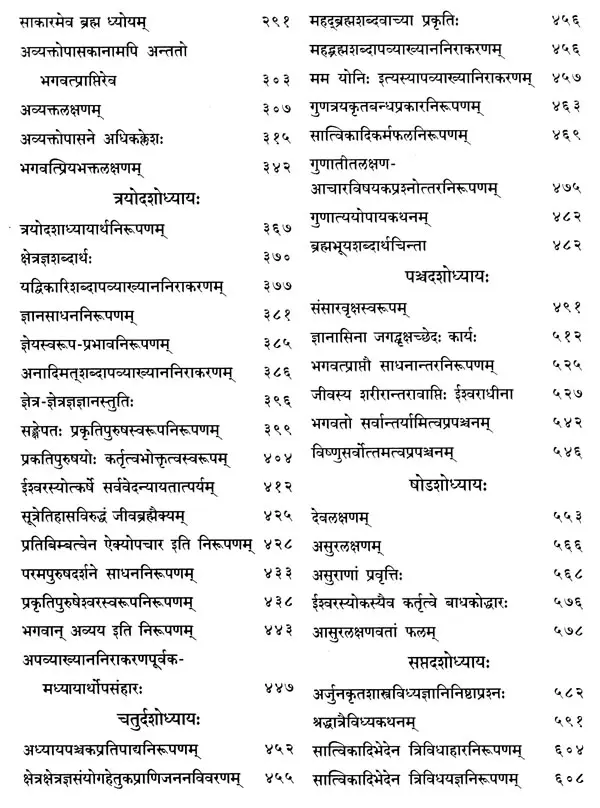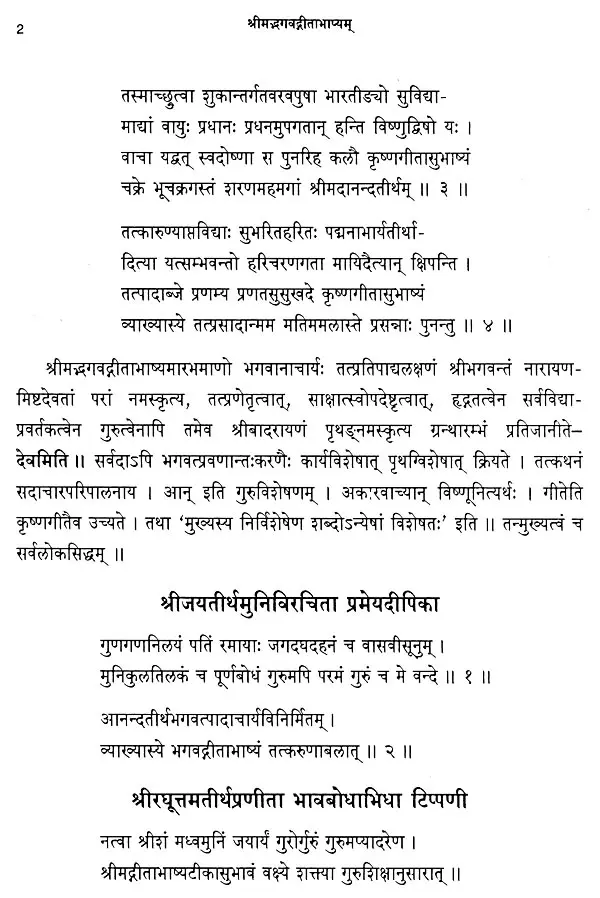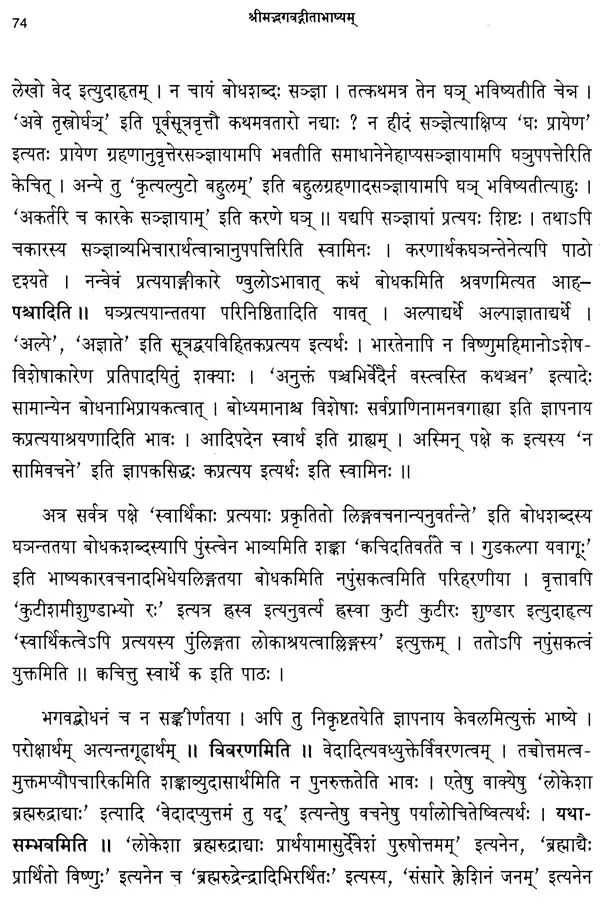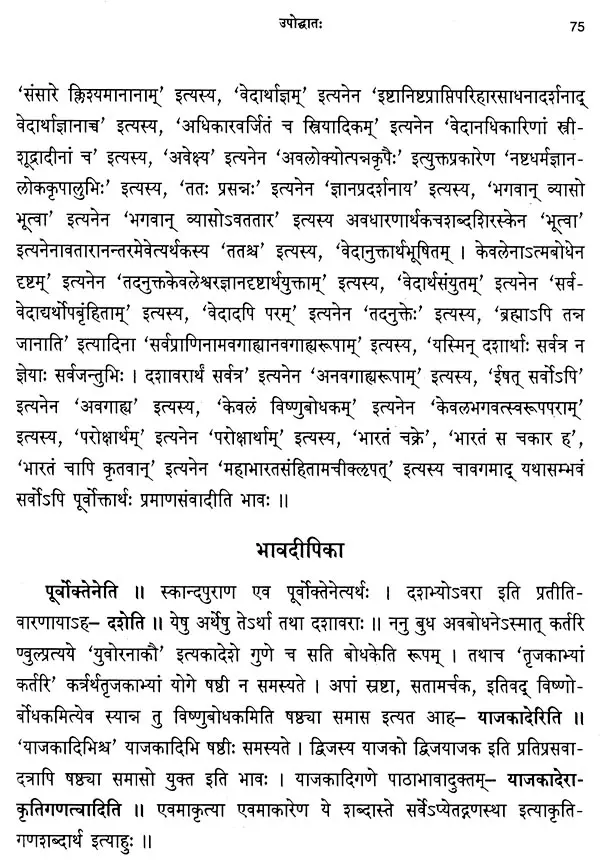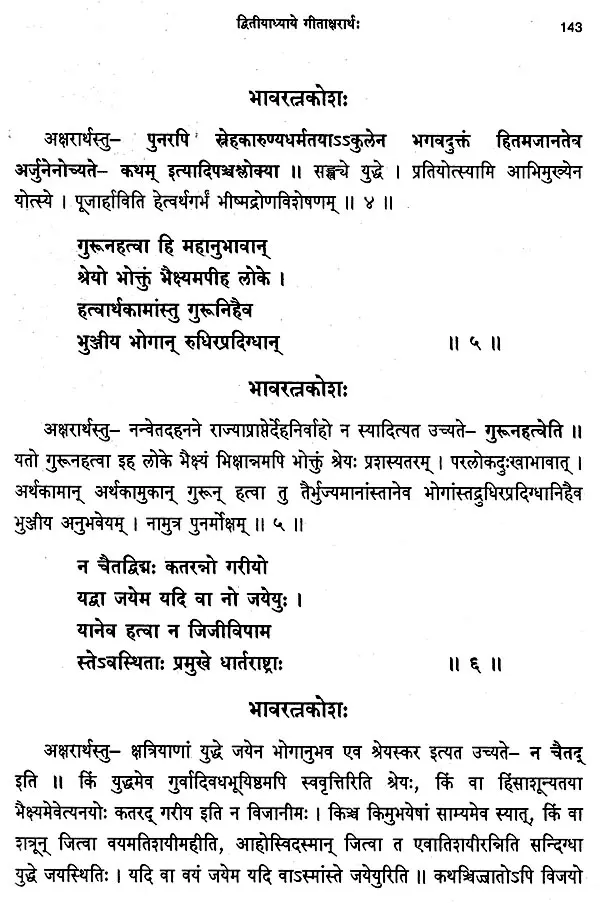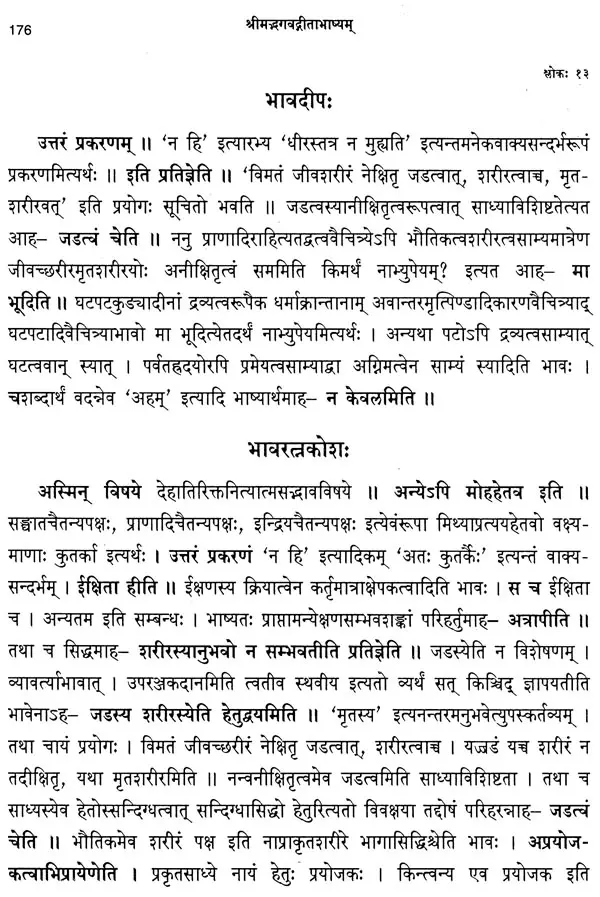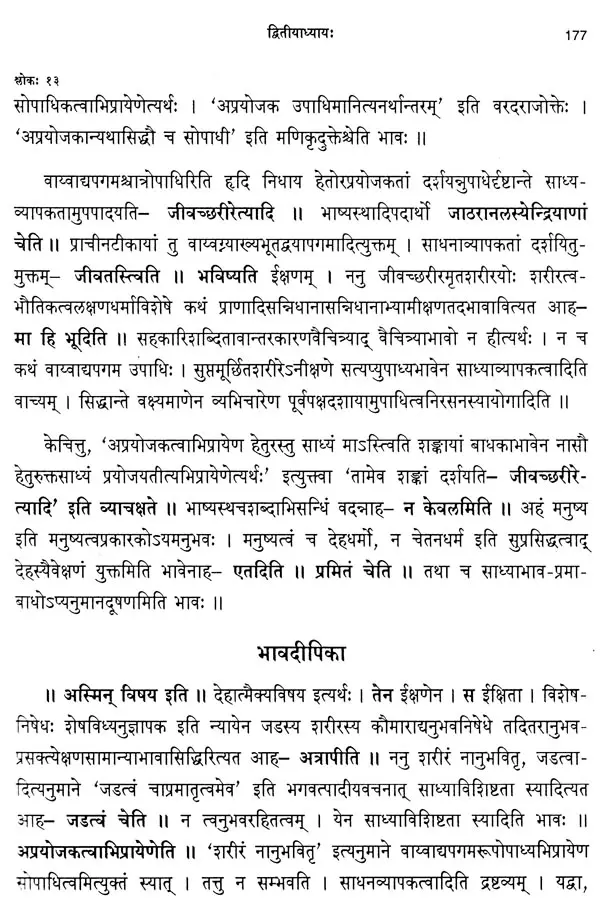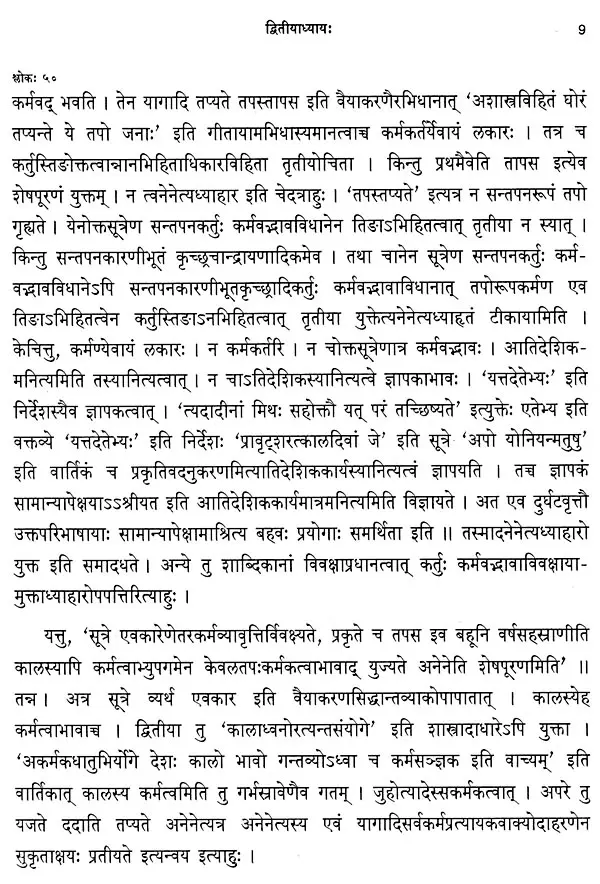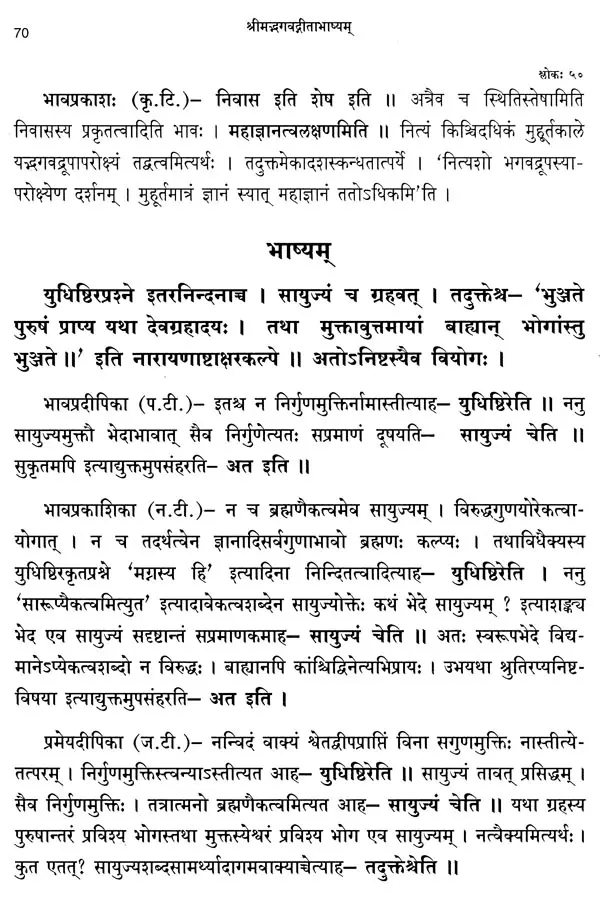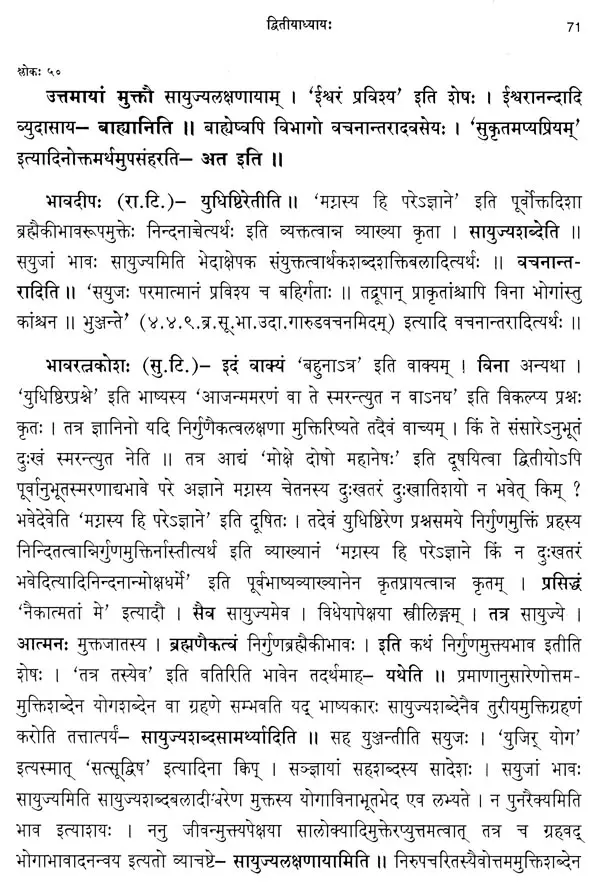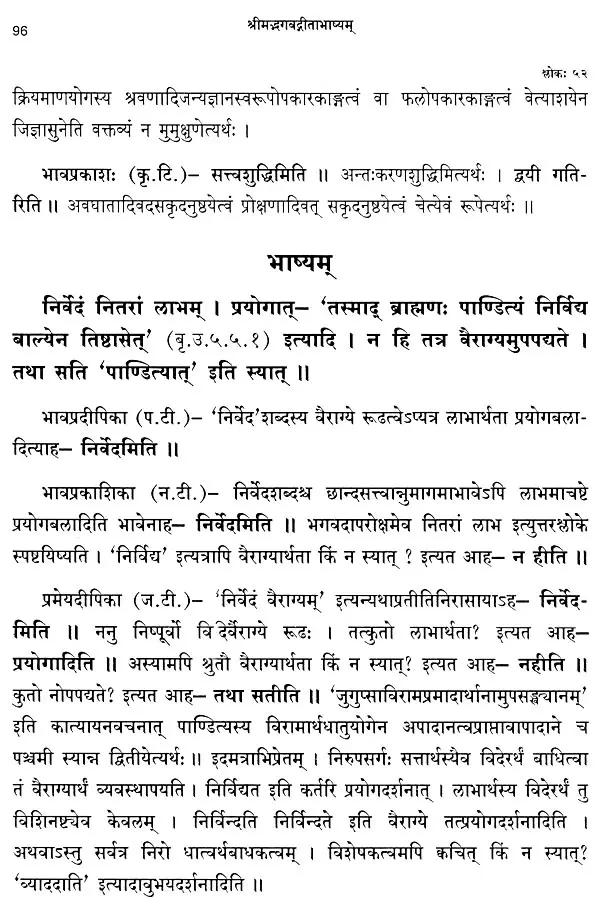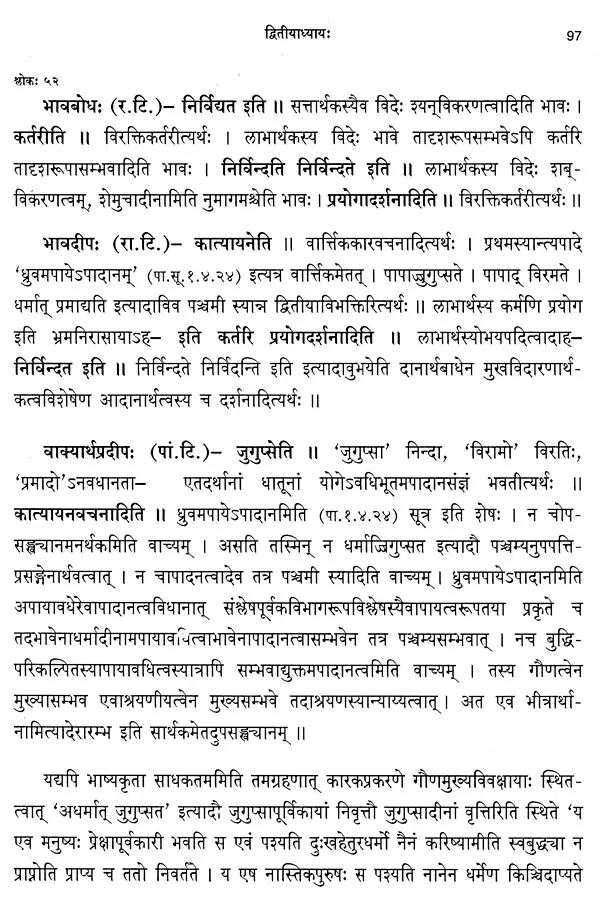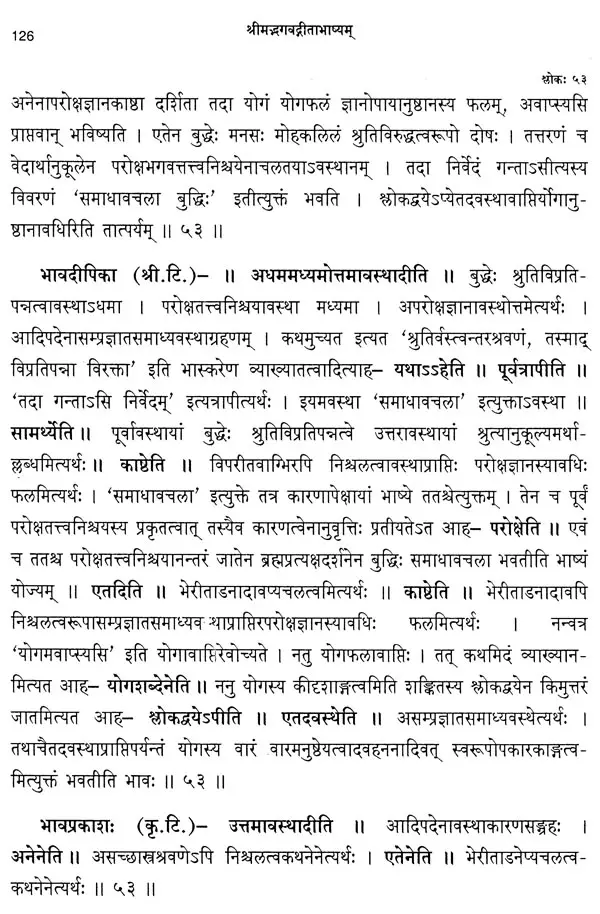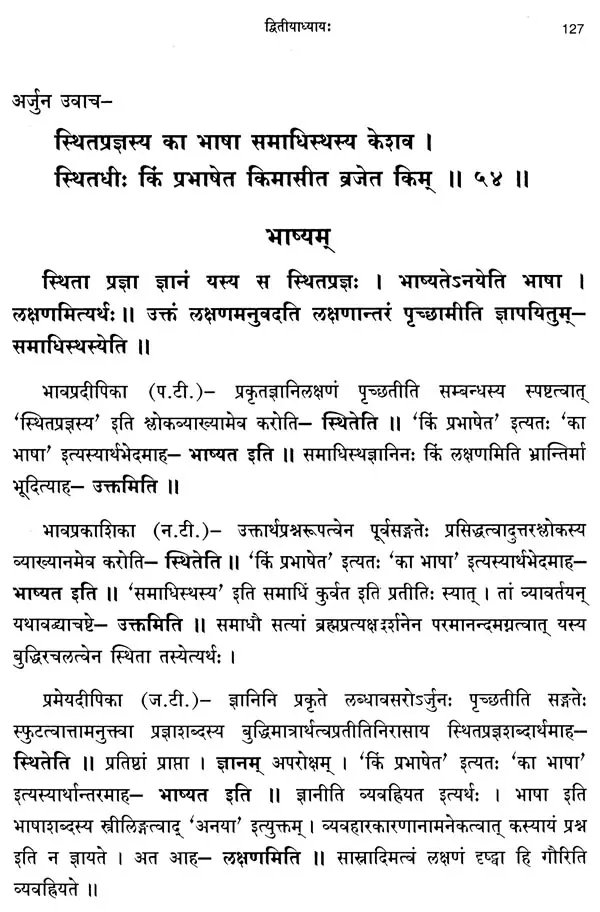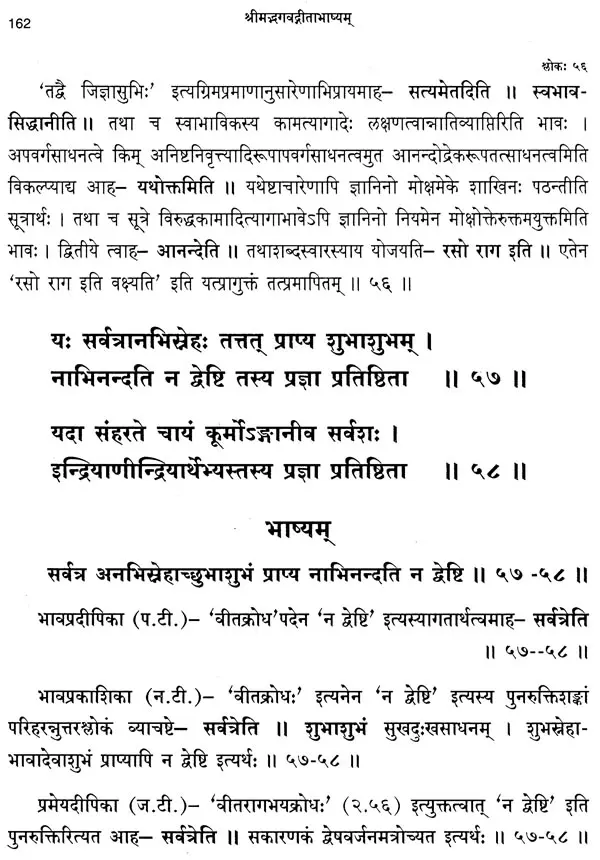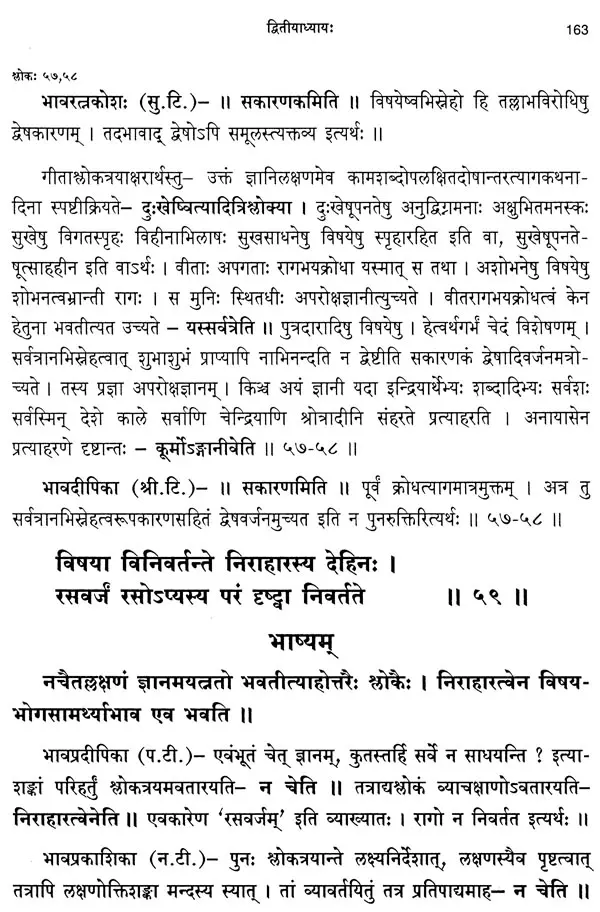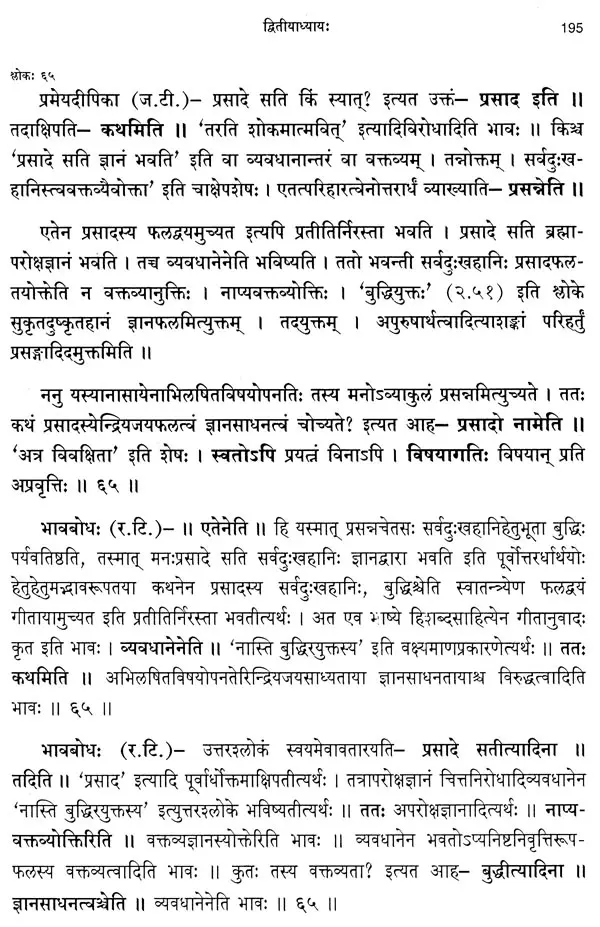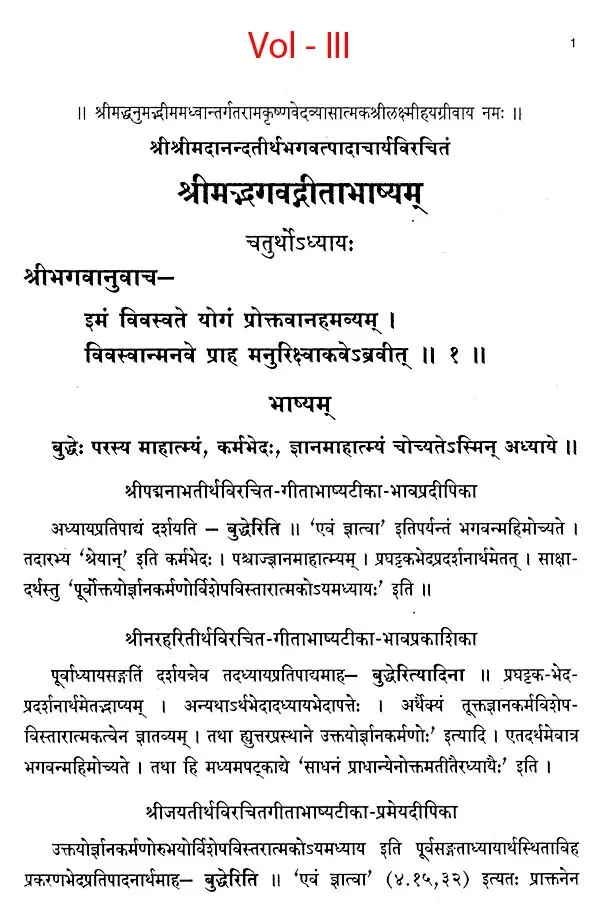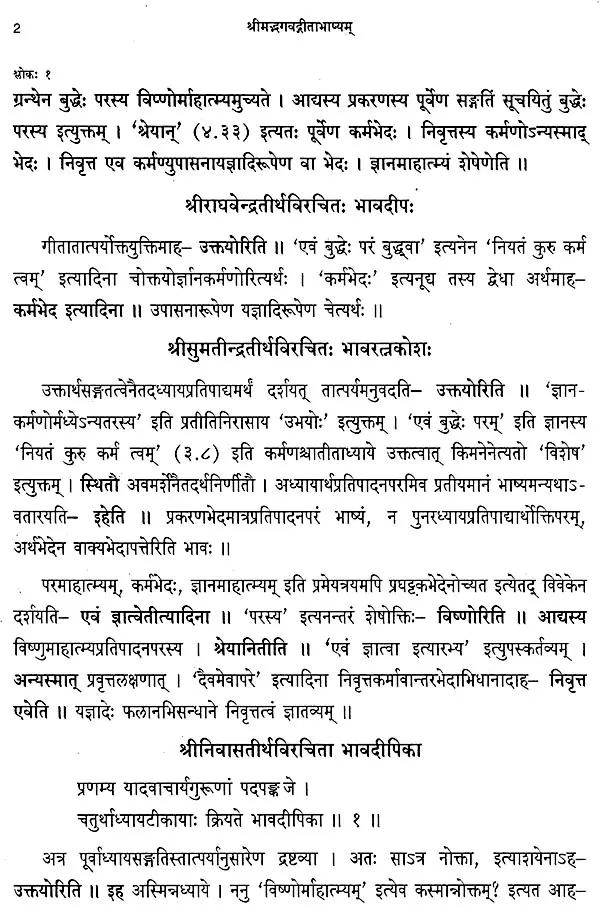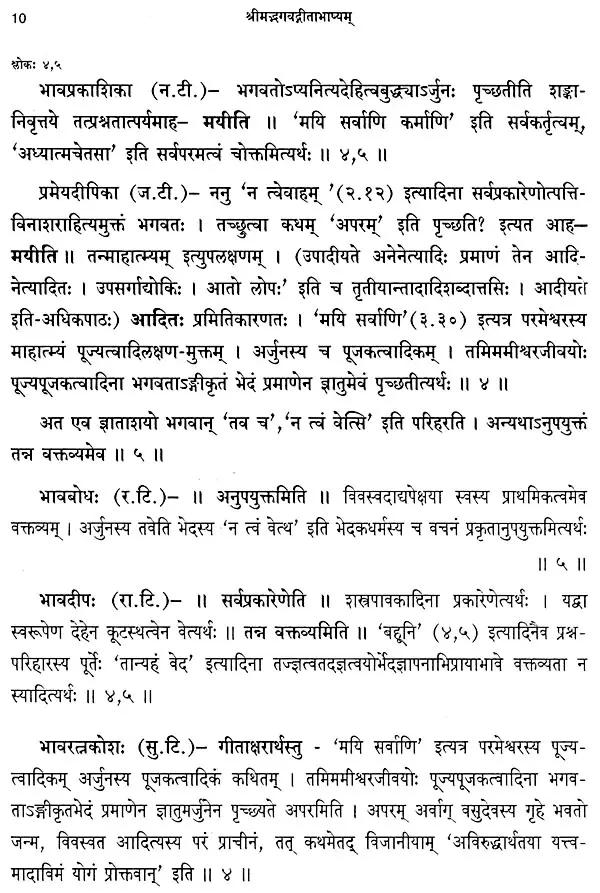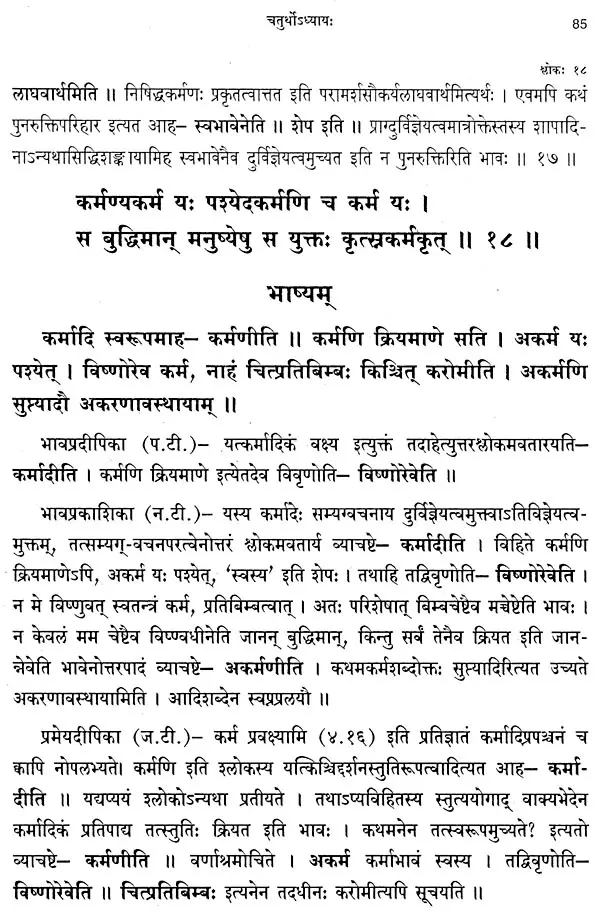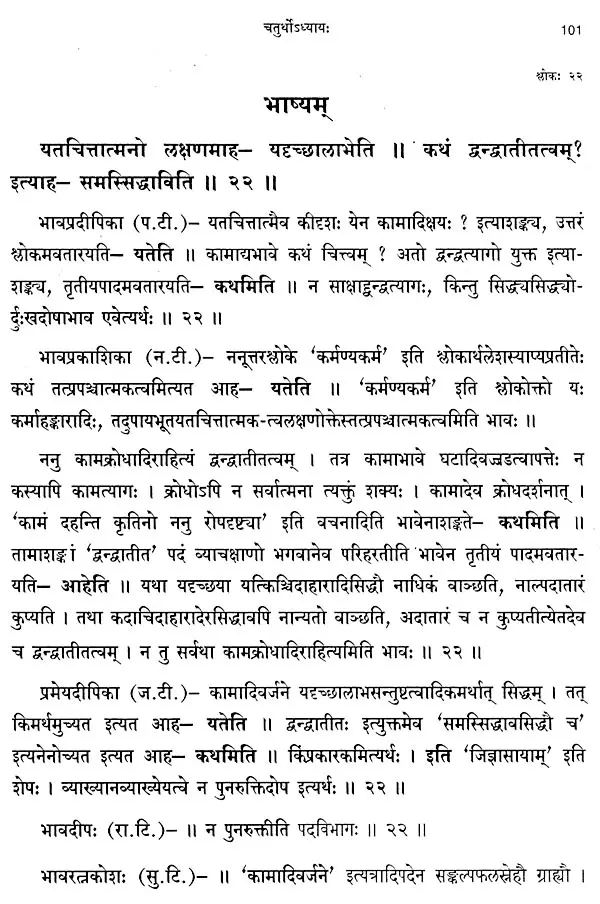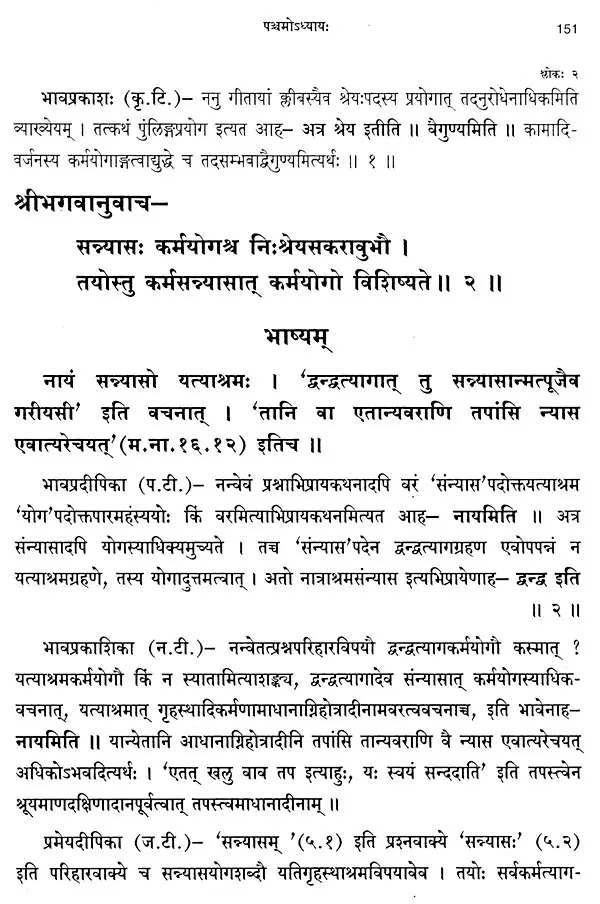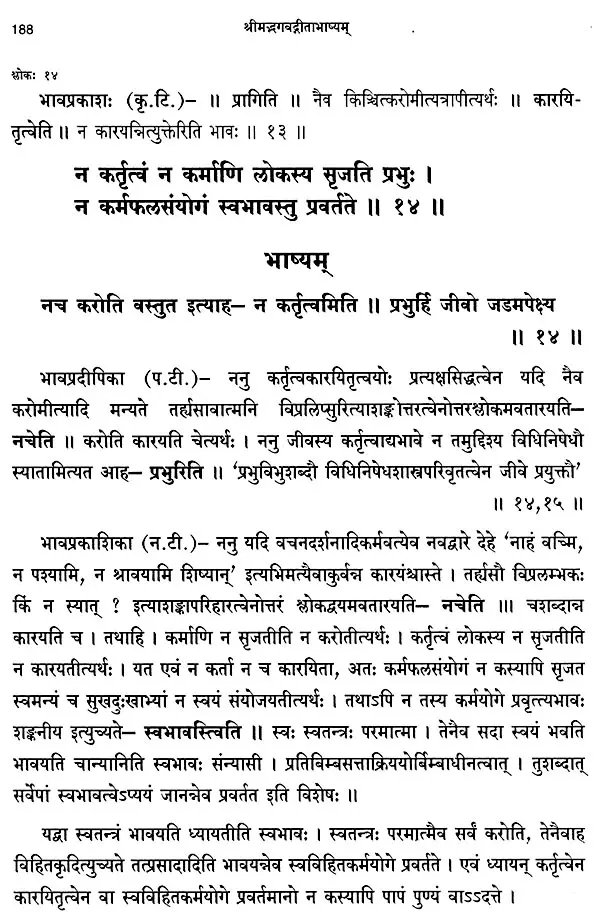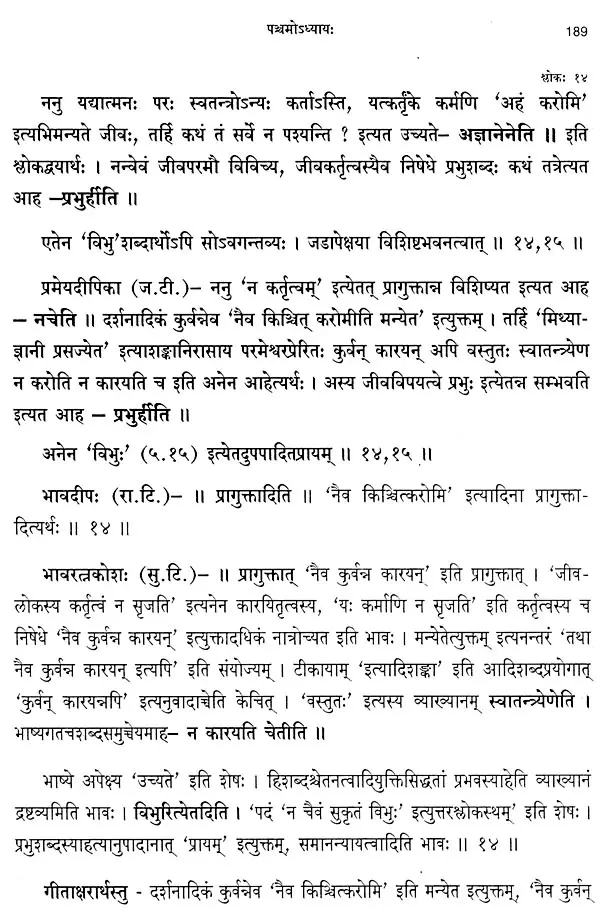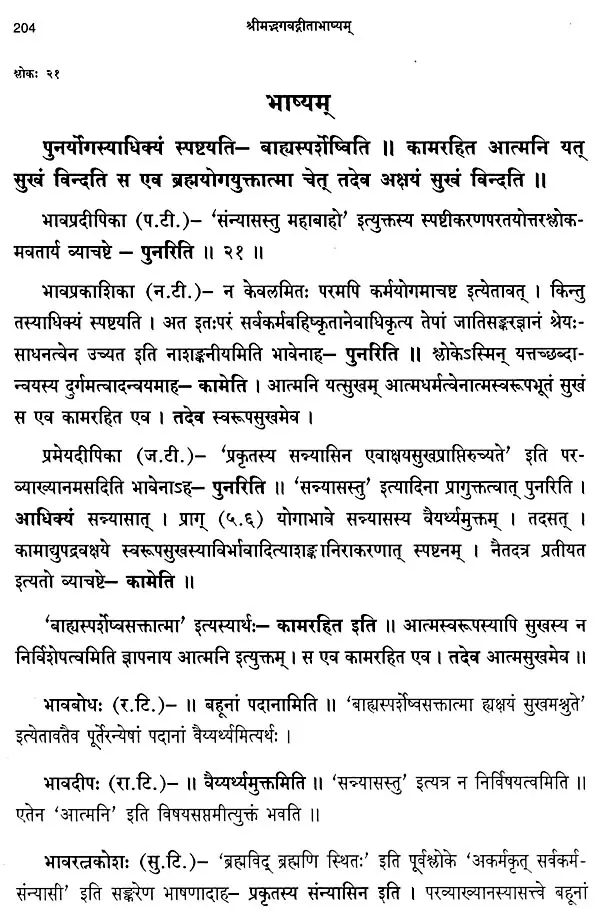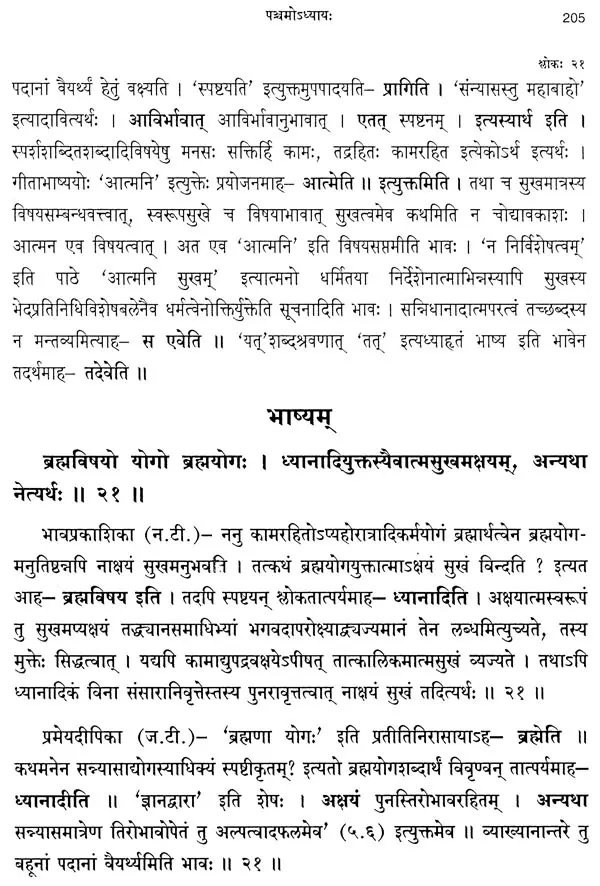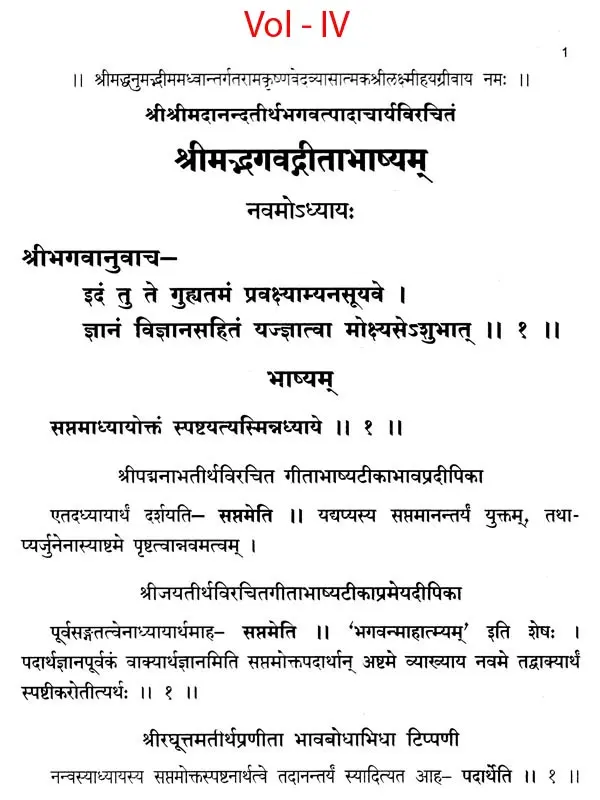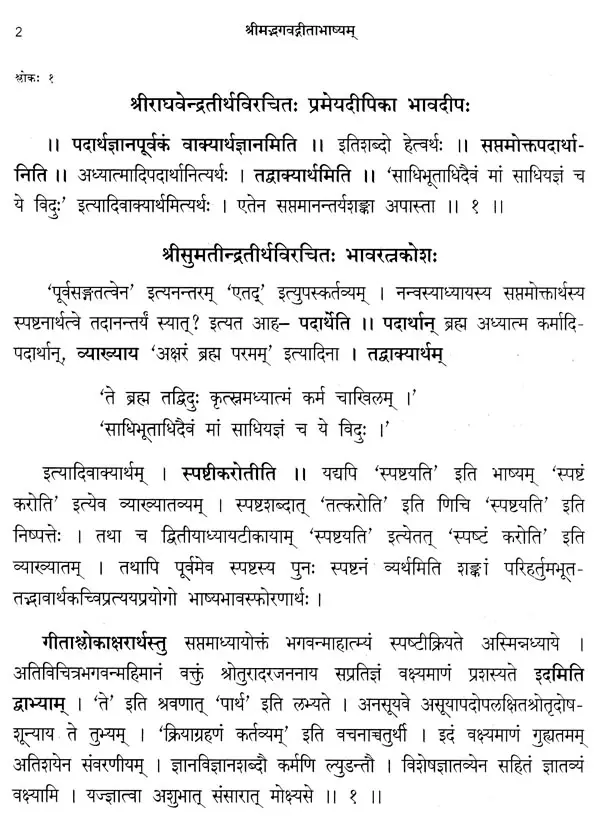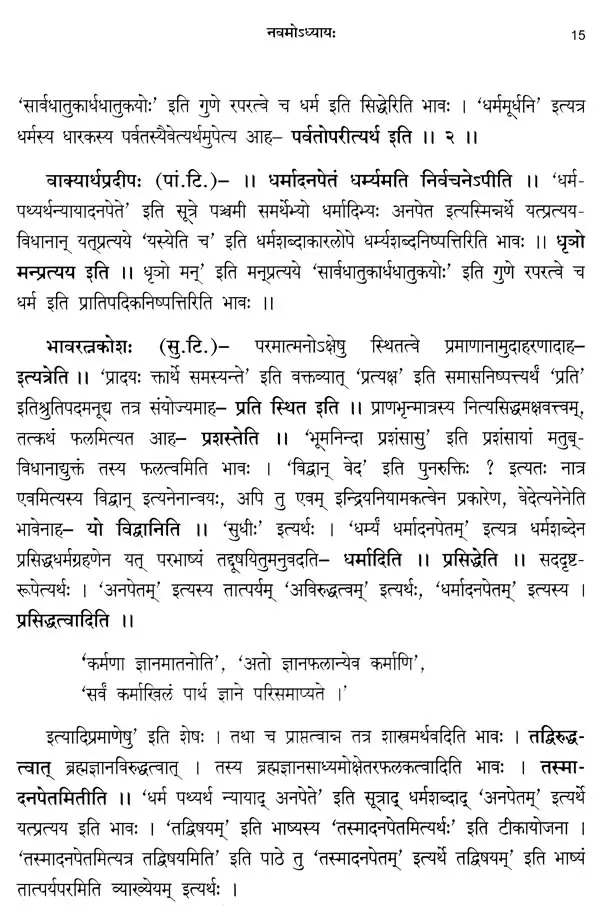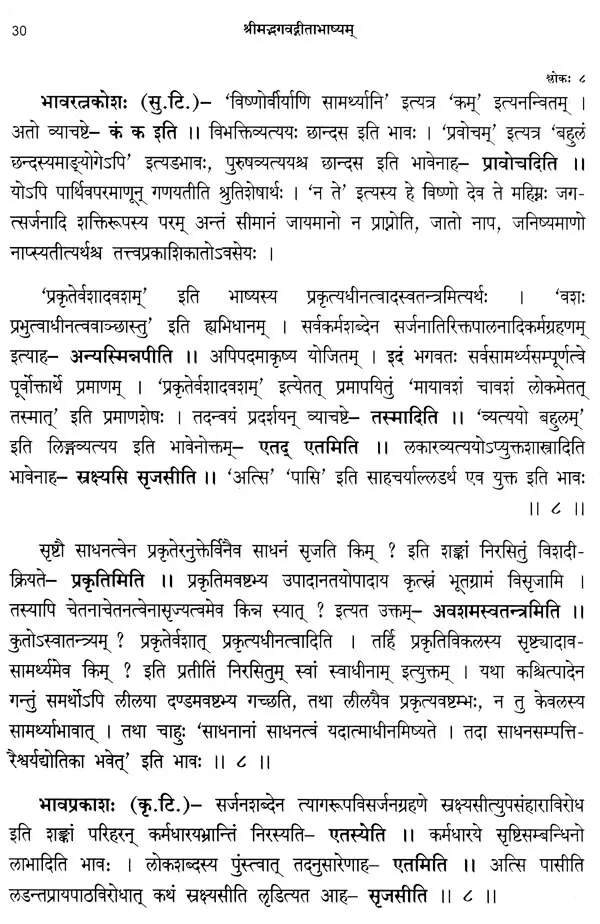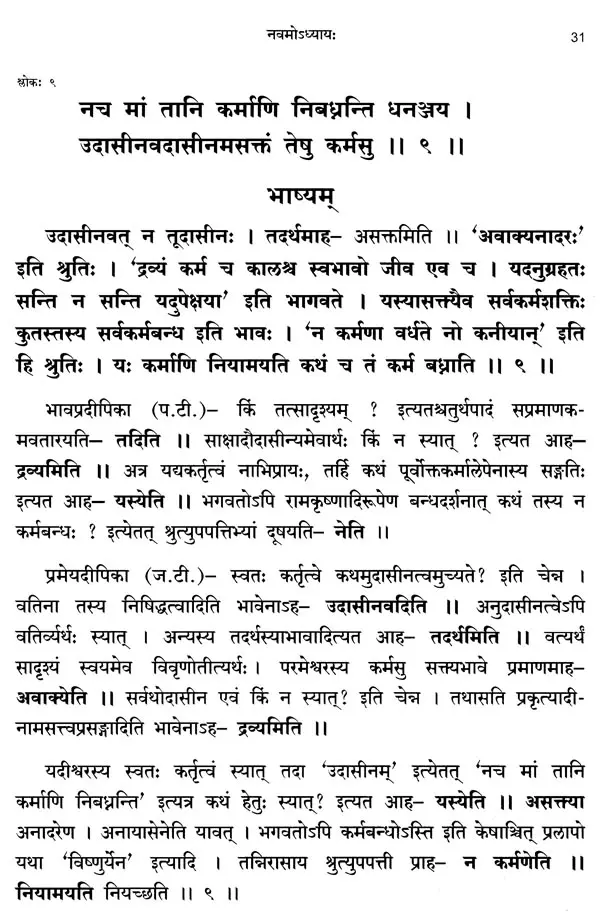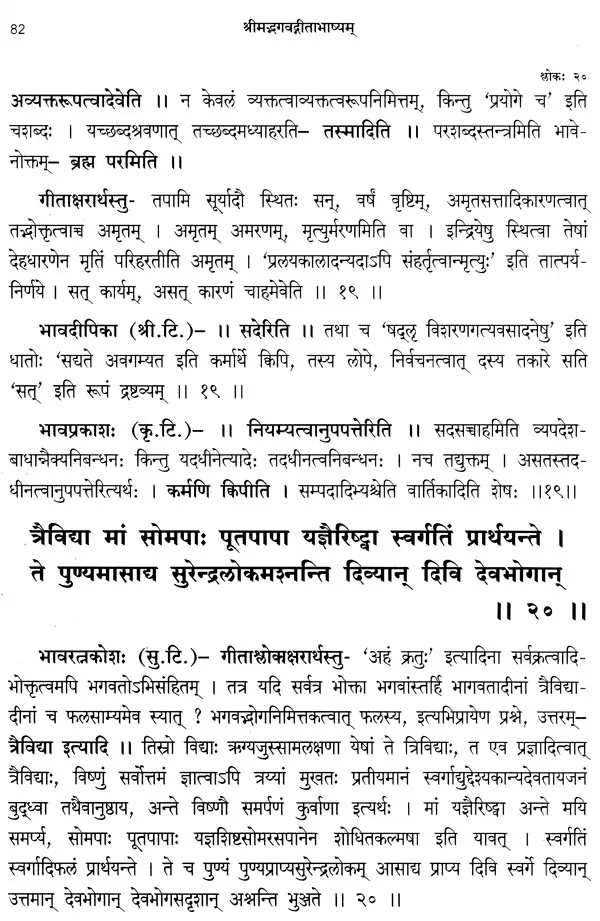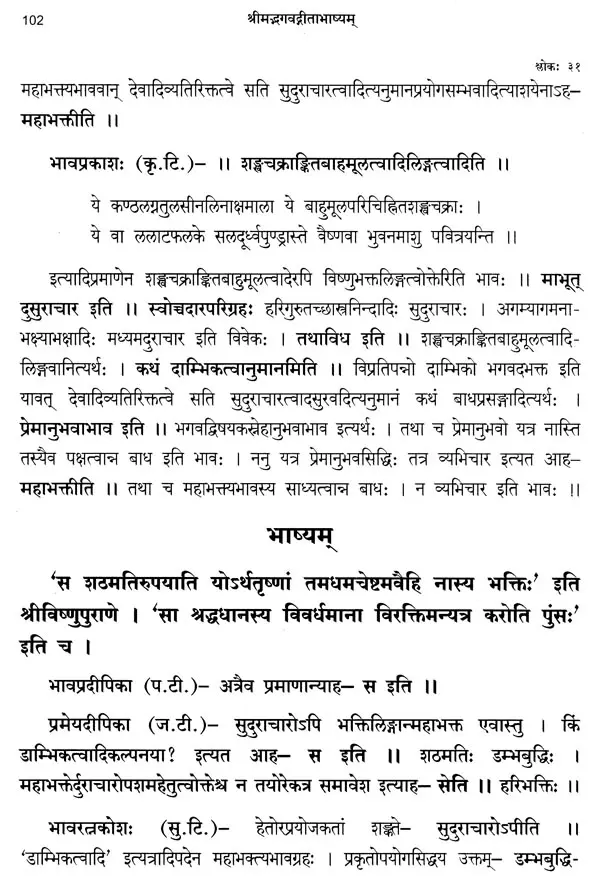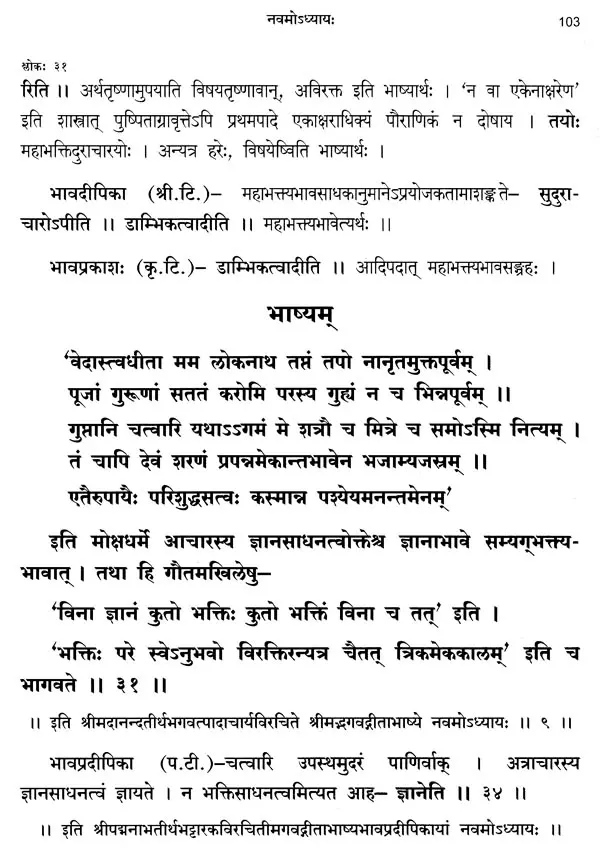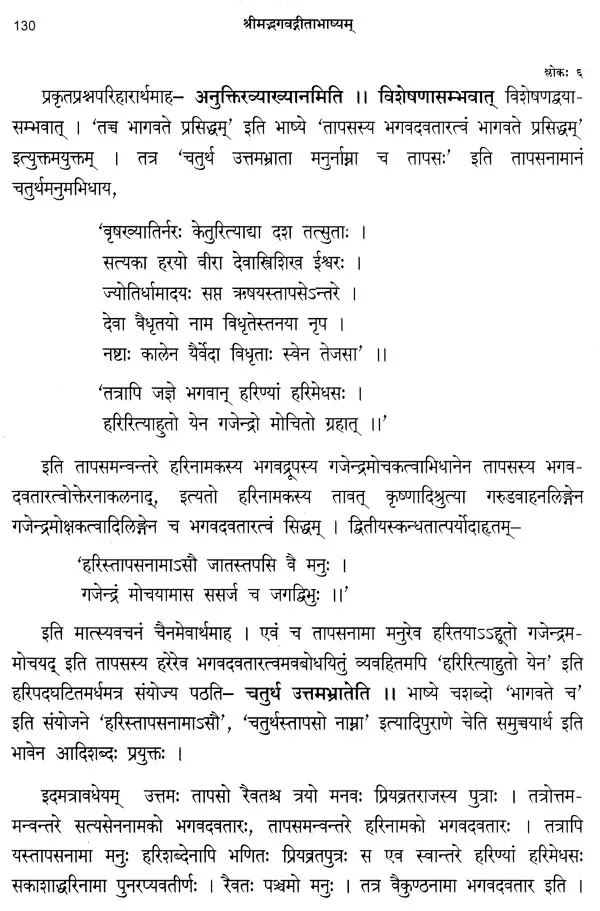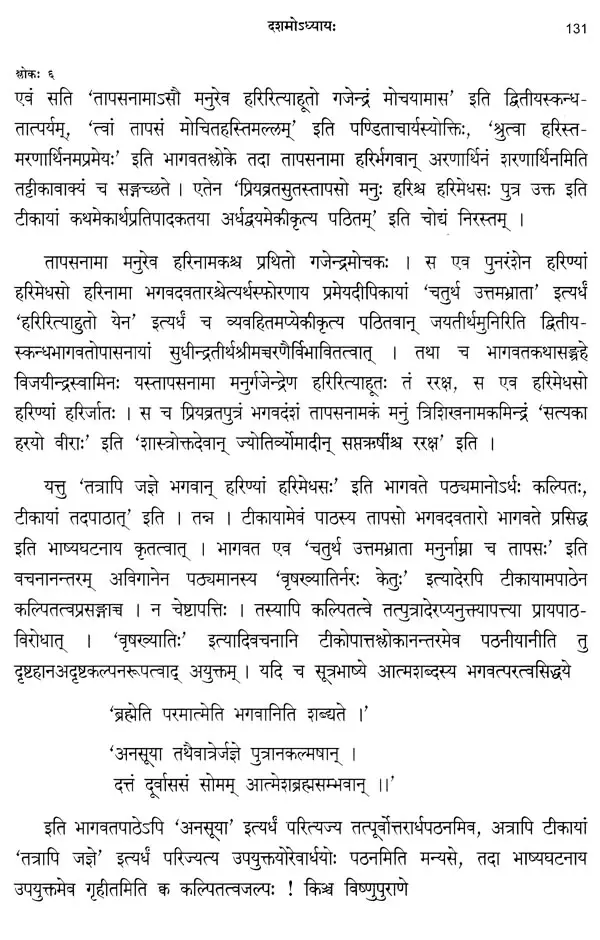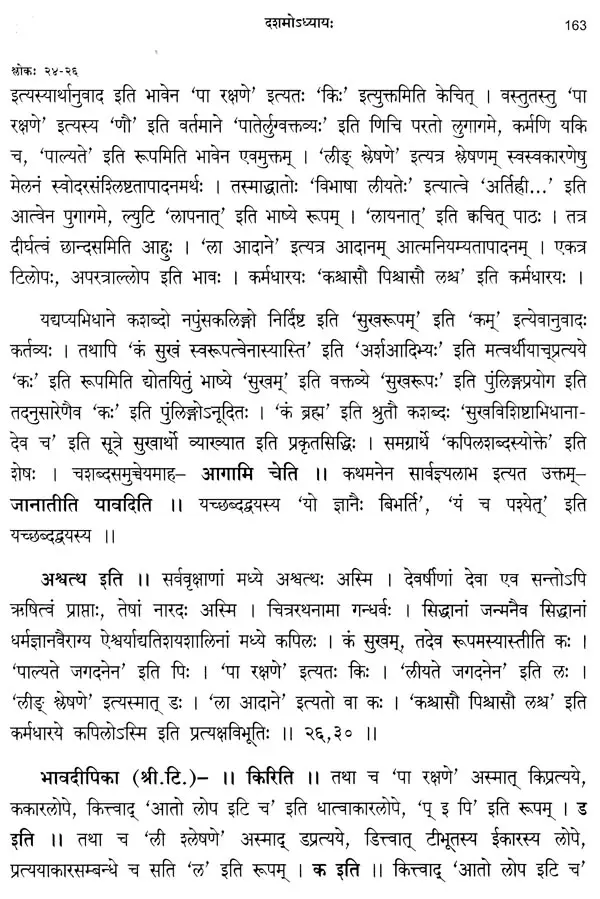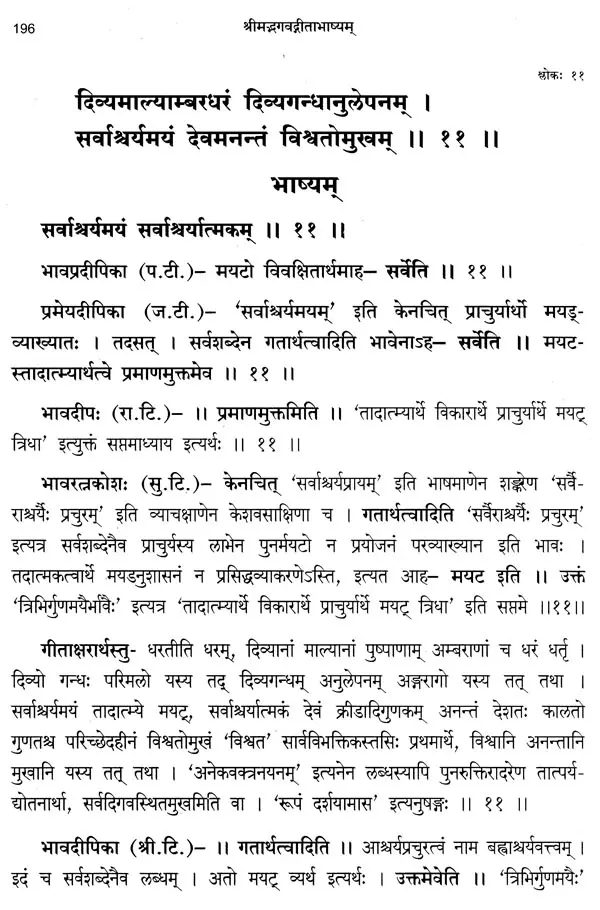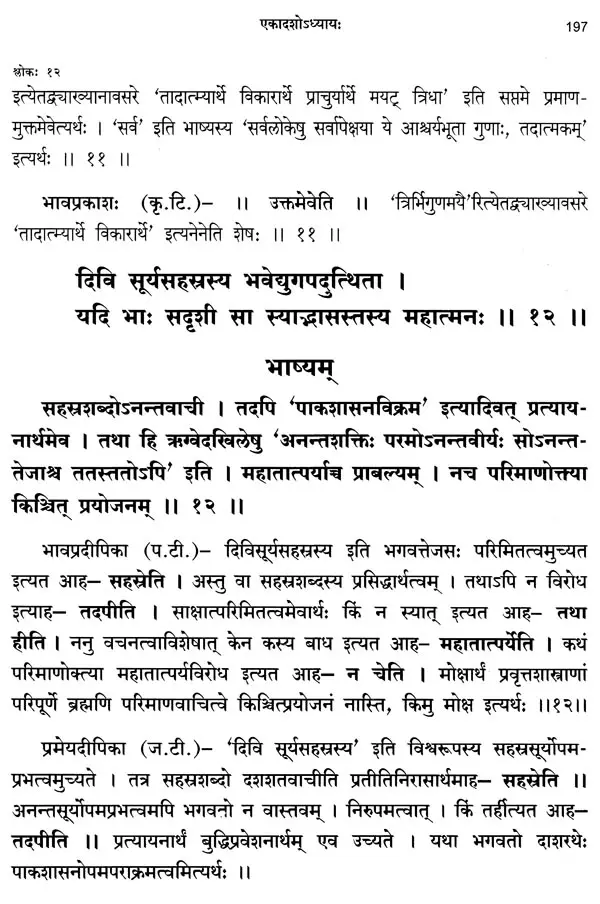
गीताभाष्यम्- Gita Bhashyam of Sri Ananda Tirtha with Six Commentaries (Set of 4 Volumes)
Book Specification
| Item Code: | UAU582 |
| Author: | K. T. Pandurangi and Krishna Prasad |
| Publisher: | Vidyadheesha Post-Graduate Sanskrit Research Centre, Bangalore |
| Language: | Sanskrit Only |
| Edition: | 2019 |
| Pages: | 2534 |
| Cover: | HARDCOVER |
| Other Details | 10.00 X 7.50 inch |
| Weight | 4.90 kg |
Book Description
Vol-2: 9789383679454
Vol-3: 9789383679539
Vol-4: 9789383679683
Bhagavad Gita advocates the philosophy of duty. This is based on the realistic world view, monotheism and universal ethics.
In view of this, it appeals to all sections of the society. Sri Ananda tirtha has written two commentories on it, viz. Gitabhasya and Gitatatparya. Both these do not give word by word meaning, but bring out the philosophical message of Bhagavad Gita quoting 'sruti' and smrti" passages in support of these doctrines. In view of the importance of this work, later writers have composed commentaries and sub-commentories on it. The earlier commentaries are Bhavapradeepika and Bhavaprakasika of Sri Narahari Tirtha, Sri Padmanabha Tirtha followed by Prameya Dipika of Sri Jayatirtha which gives full exposition of Gitabhasya. On this, there are six sub-commentaries were written Sri Raghuthama Tirtha, Sri Srinivasa Tirtha, Sri Sumatindra Tirtha, Sri Kesava Pandurangi and Sri Krisnacharya Umarji. Among these, the commentary of Sri Kesava Pandrangi is not published so far and Included in this volume. A detailed introduction in English is also added. It is hoped that this volume will be useful to the traditional and modern scholars and research students.
Bhagavadgita is one of the most popular sacred books of mankind. It is in simple style, imparts practical wisdom and has a universal appeal. It sets clearly the philosophy of duty. This philosophy of duty is based on realistic world view, and monotheistic view of religion. Gita is described as Brahmavidya and Yogasastra i.e. a book that gives knowledge, and also teaches the means to attain it.
Bhagavadgita is not a separate text. It is a part of Mahabharata. A good many verses of Bhagavadgita occur in other parts of Mahabharata with slight verbal changes but with the same thought content. In way Bhagavadgita constitutes the a essence of Mahabharata. Mahabharata, particularly. Bhagavadgita, contains the essence of the ancient Pancaratra-Bhagavata religion. Thus, Bhagavadgita represents a tradition. It is not merely a text but it is a tradition. This has to be kept in mind while interpreting and understanding Bhagavadgita.
Bhagavadgita is also an essence of Upanisads. In the colophon to each chapter it is clearly mentioned that Bhagavadgita is an essence of Upanisads. Thus, it contains the central teachings of Upanisads. Bhagavadgitammentions Brahmasutra and explains its role as an aid to rationally interpret Upanisads. Thus, Gita teaching is a synthesis of the teachings of Upanisads and Pancaratra-Bhagavata tradition, and has to be understood in this light. Many expressions, terms, concepts and ideas elaborated in Bhagavadgita have the background of these traditions and any attempt to understand Bhagavadgita ignoring this background is bound to fail. Most of the modern writers Bhagavadgita have taken it as an isolated text, ignored the cultural and on philosophical background of many of the terms, expressions, and concepts, and consquently have failed to arrive at a coherent meaning of Gita. However, they appreciate the general ethical teachings of Bhagavadgita and show great respect for its universal approach.
**Contents and Sample Pages**
